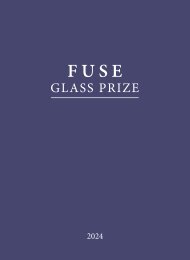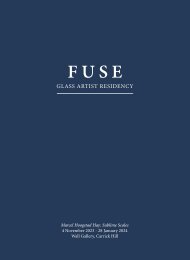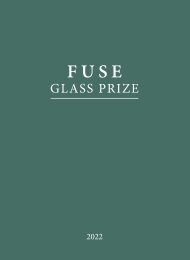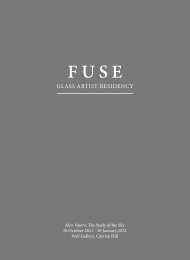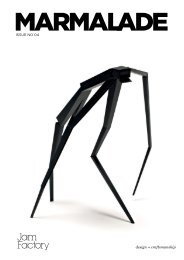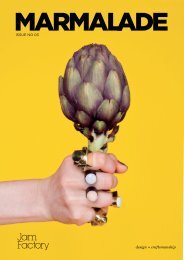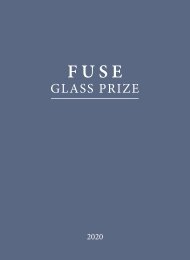Marmalade Issue 5, 2017
Create successful ePaper yourself
Turn your PDF publications into a flip-book with our unique Google optimized e-Paper software.
‘The challenge to white<br />
Australia is to address<br />
a question. How does<br />
the nation move from<br />
a state of colonial<br />
anxiety that refuses<br />
genuine recognition and<br />
engagement to a concept<br />
of locating ‘Indigenous<br />
theories, methodologies,<br />
and methods at the centre,<br />
not the periphery’ of<br />
our society?’<br />
The work of Monks, a Sydney-based Wajarri Yamatji woman<br />
with Indigenous, English and Dutch ancestry draws from her<br />
diverse heritage. Her furniture range creates a meeting point<br />
where Indigenous philosophies of sustainability, innovation<br />
and collaboration merge with contemporary art and design<br />
principles. The series marlu (kangaroo) from 2016 features<br />
wabarn-wabarn (bounce) chair with undardu (kangaroo<br />
skin blankets), walarnu (boomerang) chair and nyinajimanha<br />
(sitting together) stools and table and thalanara (rug). The<br />
powerful pieces use the recognizable language of furniture<br />
design yet seamlessly weave cultural narratives, which<br />
beguile and intrigue. Two worlds are colliding but nothing<br />
clashes or contradicts, instead unity is found and celebrated.<br />
In nyinajimanha (sitting together) a round table and chairs<br />
create a striking balance in polished blackwood echoing the<br />
sleek minimal furniture popular in industrial style cafes. But<br />
these choices are not just functional or aesthetic they are<br />
created to tell the story of people connecting and sharing<br />
knowledge. The chairs are positioned close to the ground<br />
to connect us to the Earth. At the centre of the table, a<br />
woven basket with both knitting needles and traditional<br />
weavings are in mid-flow, connecting both cultures through<br />
their similarities and craft. Monks is showing the viewer, or<br />
user, that Australia is a complex environment where wildly<br />
different lifestyles and races exist (not always in harmony)<br />
but it is possible to find connection and meaning in our<br />
plurality, which brings us closer together.<br />
For Monks, living in a city like Sydney is an opportunity to<br />
connect with her culture and respect the land of the Gadigal<br />
people in a multicultural landscape of many influences.<br />
The search for the ‘real Aboriginal’ is replaced by genuine<br />
meaning and understanding of history and our future. In<br />
her own acknowledgement to country she states:<br />
“We are all connected to this place as we live, work and<br />
play on Aboriginal Land. Today 228 years after the invasion<br />
I stand here as part of the design industry where we talk<br />
about sustainability and eco footprints influencing our<br />
design. But for the custodians of this land the philosophies<br />
of interconnectedness and respecting the Earth is a way of<br />
life, of being. As the designers, the creatives and the future<br />
makers, you have the ability to drive change. We are creating<br />
the history of now with the objects and spaces we create and<br />
the future we want to live in, for me this responsibility means<br />
taking lead from the custodians of this land and I thank them<br />
for imparting me with this knowledge.” 4<br />
Earlier this year I attended the Place, Politics and Privilege<br />
Conference at Victoria University. The keynote lecture<br />
by Professor Tony Birch talked about Aboriginal and<br />
white Australia’s differences but also stressed the need<br />
for collaboration if we are to resolve significant issues<br />
like climate change. His words soothed some of my own<br />
cynicism, recognising the power of working together and<br />
fusing knowledge which Monks’s furniture so beautifully<br />
illustrates. But as I have also witnessed in my own career<br />
these collaborations often eschew the Aboriginal voice. In an<br />
article Climate Change, Recognition and Social Place-Making<br />
Birch writes:<br />
“The challenge to white Australia is to address a question.<br />
How does the nation move from a state of colonial anxiety<br />
that refuses genuine recognition and engagement to a<br />
ISSUE 05 / 27




